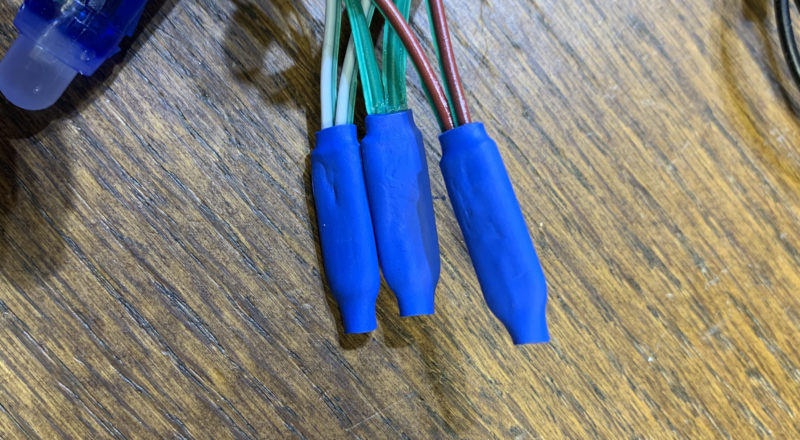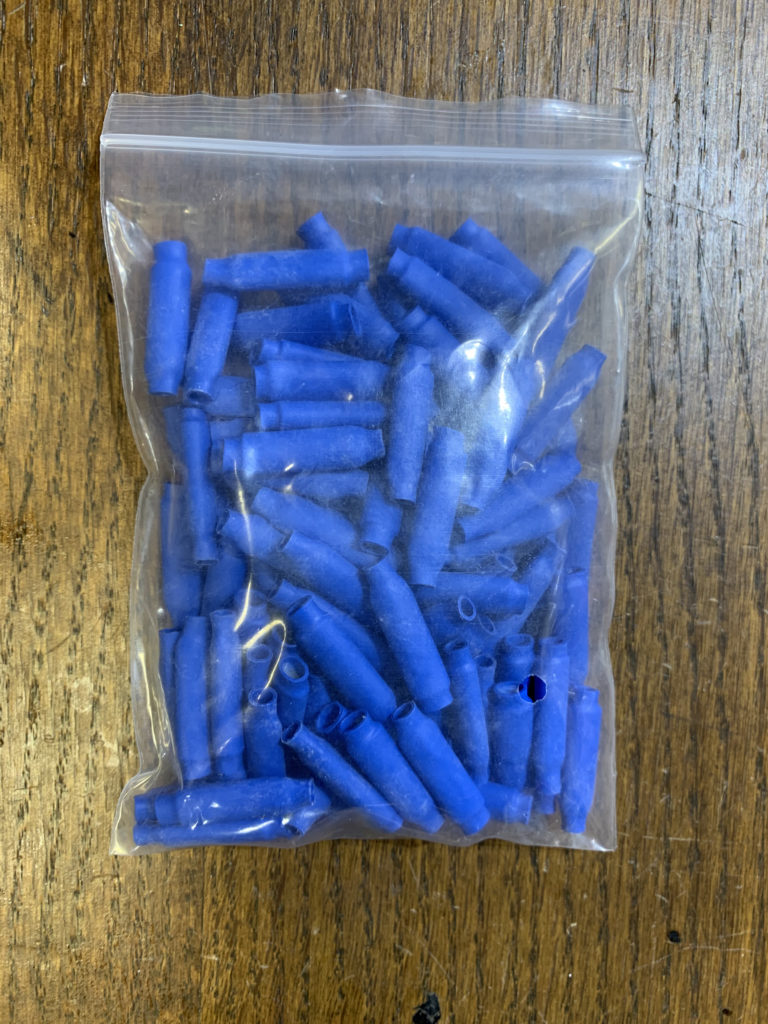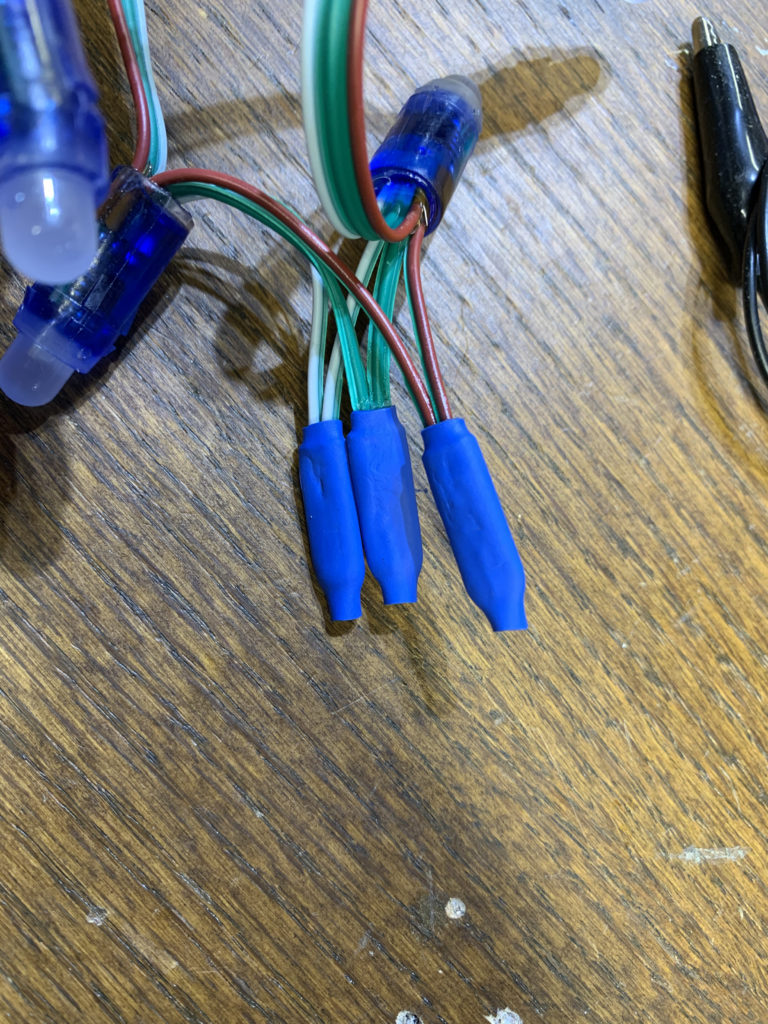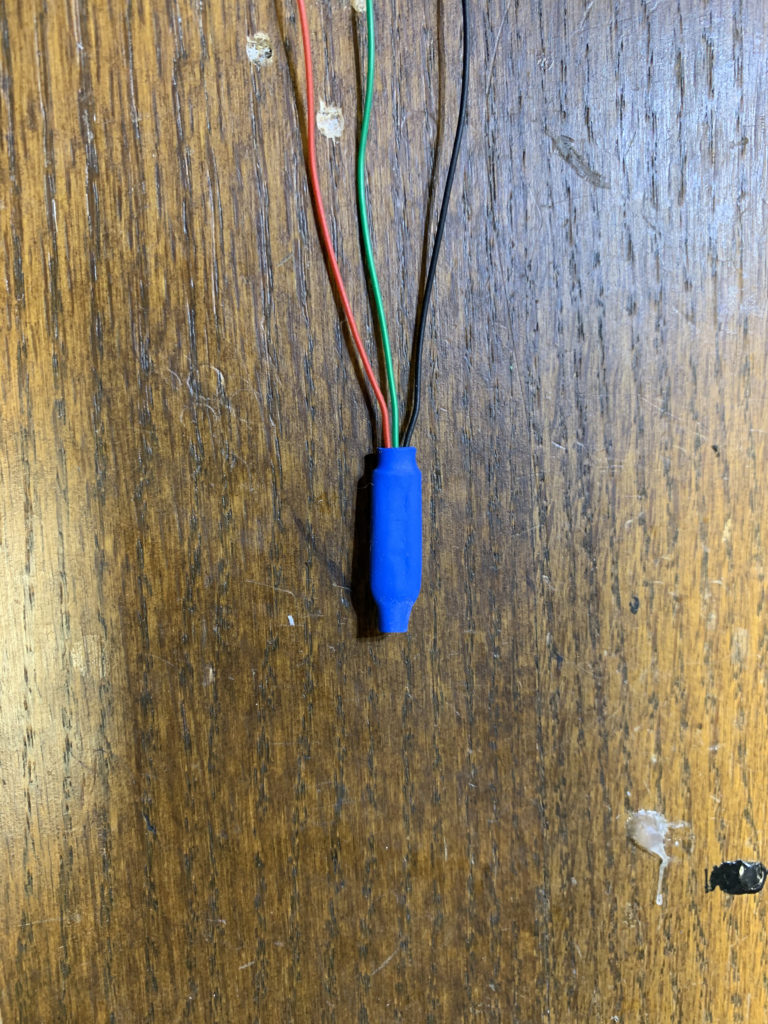
“Dolphin” Connectors for Pixel Repairs
I mentioned in an earlier post about Scotchloks ™ that I was also going to check out “Dolphin” connectors. I don’t have any experience with them, but I have seen them used as an alternative to Scotchloks in Tele/Data-com applications.
I bought a pack of them on Amazon.

These are “IDC” (Insulation Displacement Contact) connectors similar to Scotchloks. You are supposed to push the wires inside and crimp the whole connector. There are metal plates with teeth inside that pierce the insulation and grab hold of the conductor. They come filled with sealant (there are “dry” versions available too) to make a weatherproof connection.
I’ve found them to not be quite as “fiddly” as Scotchloks- you can just pinch them with any pliars and you are done. No touchy button to worry about, and not as picky about making sure the wires are lined up and fully-inserted. (Although these are no big deal for me as I’ve been using Scotchloks for decades.) They are also about half the price of the Scotchlok UY2 connectors that many of us use.
All that said- I don’t feel they are suitable for this hobby. What I found is most pixel wire thicknesses won’t insert all the way into the connector, and the insulation may be too thick to get a good connection most of the time. These don’t have as robust a connector system inside (tiny metal teeth) as the Scotchloks. The little teeth can collapse fairly easily, and that combined with not being able to push the wires all they way to the back of the connector means they have a much lower chance of making a strong, and long term, connection.

They work very well for things like Cat. 3 and Cat. 5 cable (which again, they are designed for), and standard alarm cable and bell wire. They barely work, if at all, for stranded pixel wire. In the test above- the connections were very easily pulled apart.

I’d say if you do use them for pixels- strip about 1/4″ of wire and twist it together first, and then try to shove the connection as far into the connector as possible. If insufficient insulation makes it inside- the connector may not hold, and will not be weatherproof.
Now- they can be useful for patching network cables and alarm wire together, so I can see using them if you find yourself needing to extend a differential cable or 3-wire pixel data/power cable from a controller. They are just more trouble than they are worth for splicing in pixels.
Update (December 2021):
I’ve never been able to successfully use these for pixels. I’ve tried several more times. They just don’t work with the insulation and stranded wire. Some people online insist they work, but I haven’t found any way to do it that gives me any confidence in the connection. Even stripping the wire first- you can get a functional connection, but with uninsulated wire protruding from it and it isn’t very mechanically sound. They simply aren’t designed for this application. I do occasionally use them for splicing data/telecom wires, but even for those- Scotchloks have proved to be a more-reliable option.
